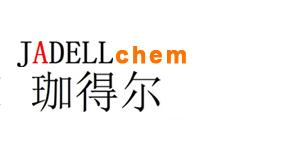Recombinant Human Pigment Epithelium-derived Factor是分泌糖蛋白,是丝氨酸蛋白酶抑制剂(丝氨酸蛋白酶抑制剂)家族的非抑制成员。
Synonyms
rHuPEDF; SerpinF1; EPC-1
Species
HumanSource
E. coli Accession
P36955 Gene ID
5176 Molecular Weight
Approximately 44.4 kDa AA Sequence
QNPASPPEEG SPDPDSTGAL VEEEDPFFKV PVNKLAAAVS NFGYDLYRVR SSTSPTTNVL LSPLSVATAL SALSLGAEQR TESIIHRALY YDLISSPDIH GTYKELLDTV TAPQKNLKSA SRIVFEKKLR IKSSFVAPLE KSYGTRPRVL TGNPRLDLQE INNWVQAQMK GKLARSTKEI PDEISILLLG VAHFKGQWVT KFDSRKTSLE DFYLDEERTV RVPMMSDPKA VLRYGLDSDL SCKIAQLPLT GSMSIIFFLP LKVTQNLTLI EESLTSEFIH DIDRELKTVQ AVLTVPKLKL SYEGEVTKSL QEMKLQSLFD SPDFSKITGK PIKLTQVEHR AGFEWNEDGA GTTPSPGLQP AHLTFPLDYH LNQPFIFVLR DTDTGALLFI GKILDPRGP Biological Activity
The ED50 is <2 ng/mL as measured by human Saos2 cells, corresponding to a specific activity of >5.0 × 105 units/mg. Appearance
Lyophilized powder. Formulation
Lyophilized after extensive dialysis against 20 mM PB, pH 7.4, 150 mM NaCl. Endotoxin Level
<1 EU/μg, determined by LAL method. Reconstitution
Reconstitute the lyophilized recombinant Human Pigment Epithelium-derived Factor (rHuPEDF) to 0.1-1.0 mg/mL using sterile distilled water or aqueous buffer containing 0.1 % BSA. Storage & Stability
Lyophilized recombinant Human Pigment Epithelium-derived Factor (rHuPEDF) is stored at -20°C. After reconstitution, it is stable at 4°C for 1 week or -20°C for longer. It is recommended to freeze aliquots at -20°C or -80°C for extended storage. Shipping
Room temperature in continental US; may vary elsewhere. Background
Pigment Epithelium-derived Factor belongs to the serine protease inhibitor (serpin) family. The Pigment Epithelium-derived Factor gene contains a typical signalpeptide sequence, initiator methionine codon, and polyadenylylation signal and matches the size of other members of the serpin superfamily. Pigment Epithelium-derived Factor is a neurotrophic agent[1]. It is widely expressed in human fetal and adult tissues but its expression decreases with age and in malignant tissues. The main anticancer activities of Pigment Epithelium-derived Factor derive from its dual effects, either indirectly on the tumor microenvironment (indirect antitumor action) or directly on the tumor itself (direct antitumor influence)[2]. Pigment Epithelium-derived Factor has complex neurotrophic, neuroprotective, anti-angiogenic, anti-oxidative, and anti-inflammatory properties, and could potentially be exploited as a therapeutic option for the treatment of vascular complications in diabetes[3]. |



